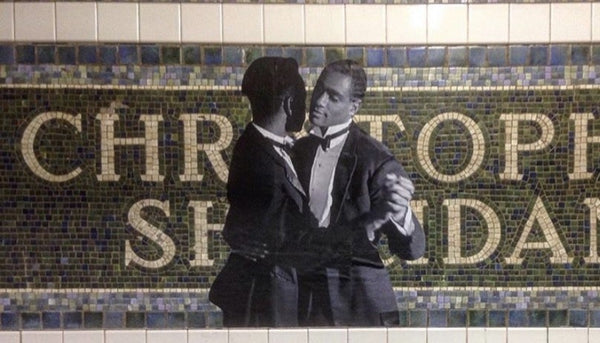Street art has always symbolized the defiance of cultural “norms,” challenged our perception of right and wrong, and has demanded to exist in public spaces. The craft is only as powerful as the people who work in it, therefore it’s of no surprise that LGBTQ artists have been closely intertwined with some of the most powerful history and works that street art has to offer. Just as many street artists use their work to provide commentary on political, cultural, and environmental influences, LGBTQ artists often do similarly, along with bringing focus to topics such as homophobia, the 1980’s AIDS epidemic, and inequalities faced within the community.

Some of the most notable artists in recent history such as Keith Haring and David Wojnarowicz created works that were distinguishable and impactful to the art world. In the 1980’s, Haring would often draw human-like figures out of chalk on blank advertising panels stationed on NYC subway waiting platforms. Wojnarowicz used more of an “avant-garde” style within his mixed media, street art, photography, and film. Both artists passed away due to AIDS related complications in the early 1990’s, but not before using their diagnosis as a platform for activism. Wojnarowicz’s artwork became increasingly political in the years leading up to his death, commenting on the government’s lack of action and resources provided during the AIDS epidemic. Haring set up a foundation that still exists today, aimed at providing education and funding toward HIV research as well as funding toward children’s organizations.

Haring was specifically passionate about creating art that was accessible to the general public, something that was often criticized by underground artists. Though controversial in some aspects, Haring was often commissioned to create work used for advertising and branding, something largely seen with artists today. Within the LGBTQ art community, this idea of visibility has taken a different form, with many self proclaimed “queer” artists using their canvases as a way to add to the conversation of gay rights and pride. New Orleans-based artist Hugo Gyrl creates murals that invoke the same sense of rebellion seen in the Stonewall Riots of 1969. His signature witch-like character and use of bold color signifies the strength and vibrancy of the LGBTQ community, as well as their demands to be seen and heard. Jeremy Novy, a muralist and painter, often places stencils of koi-fish around areas like San Francisco, acting as anti-authoritarianism symbols like those used in Chinese artwork. Anonymous NYC subway artist Jilly Ballistic uses wheatpaste and occasionally graffiti to add historical images to signs and advertisements as social commentary.


The natural defiance that encapsulates the art of graffiti has provided a space for queer artists to create for the last 50 years. Today we’re seeing more and more exhibitions and galleries pop-up displaying LGBTQ artists, providing a much needed light toward their artwork, such as Jeremy Novy’s “A History of Queer Street Art” in 2011 and the Brooklyn Museum’s “Nobody Promised You Tomorrow: 50 Years after Stonewall” exhibition in 2019. Though it is contended that queer artists have not always had the visibility of their counterparts, it’s ascertained that their works and contributions to the history of street art has been and continues to be paramount.

Vicky Hoppe

